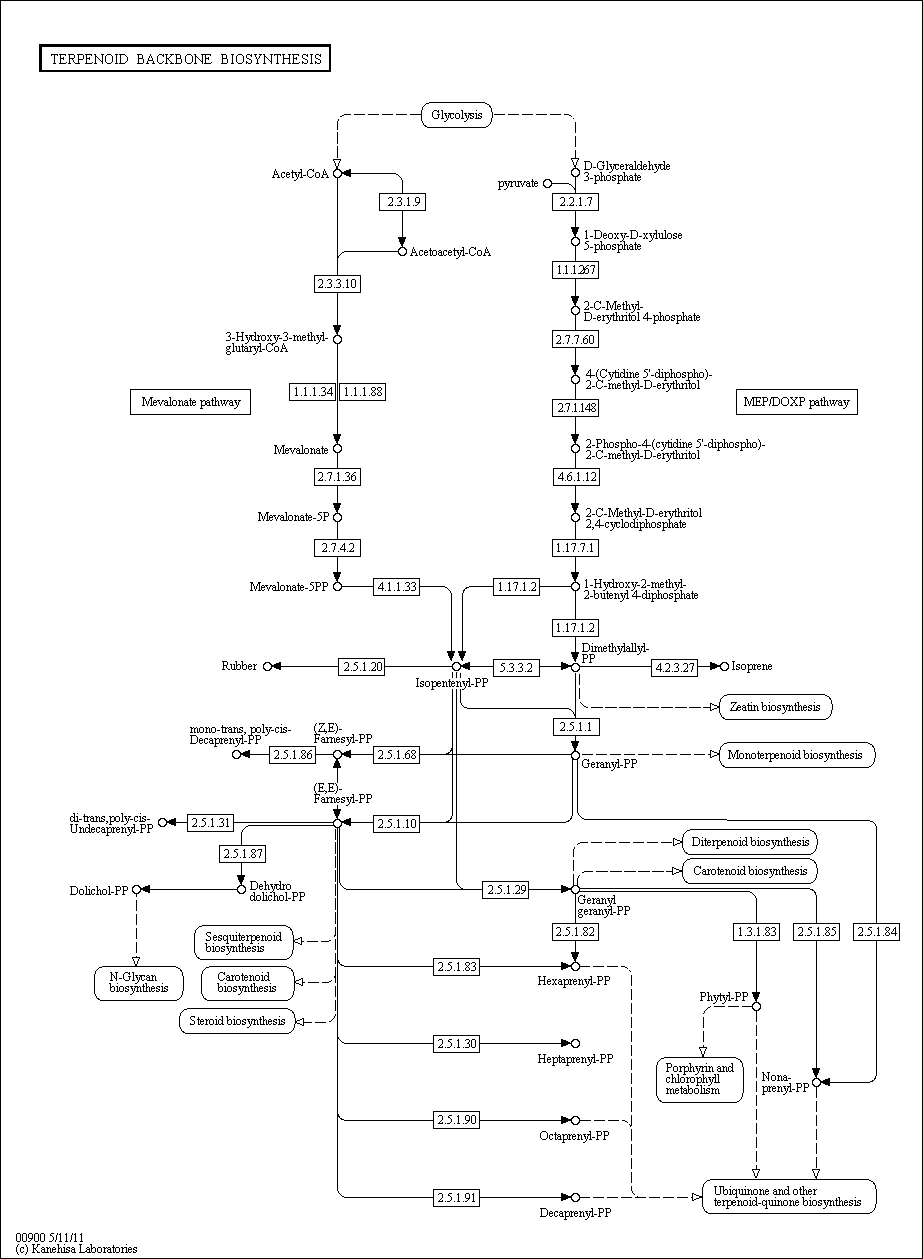Terpenoid Backbone Biosynthesis
Description: Terpenoids, also known as isoprenoids, are a large class of natural products consisting of isoprene (C5) units. There are two biosynthetic pathways, the mevalonate pathway [MD:M00095] and the non-mevalonate pathway or the MEP/DOXP pathway [MD:M00096], for the terpenoid building blocks: isopentenyl diphosphate (IPP) and dimethylallyl diphosphate (DMAPP). The action of prenyltransferases then generates higher-order building blocks: geranyl diphosphate (GPP), farsenyl diphosphate (FPP), and geranylgeranyl diphosphate (GGPP), which are the precursors of monoterpenoids (C10), sesquiterpenoids (C15), and diterpenoids (C20), respectively. Condensation of these building blocks gives rise to the precursors of sterols (C30) and carotenoids (C40). The MEP/DOXP pathway is absent in higher animals and fungi, but in green plants the MEP/DOXP and mevalonate pathways co-exist in separate cellular compartments. The MEP/DOXP pathway, operating in the plastids, is responsible for the formation of essential oil monoterpenes and linalyl acetate, some sesquiterpenes, diterpenes, and carotenoids and phytol. The mevalonate pathway, operating in the cytosol, gives rise to triterpenes, sterols, and most sesquiterpenes. Source: KEGG (map00900)

Related BMRB Molecules
For complete information about pathway, see KEGG [map00900]
